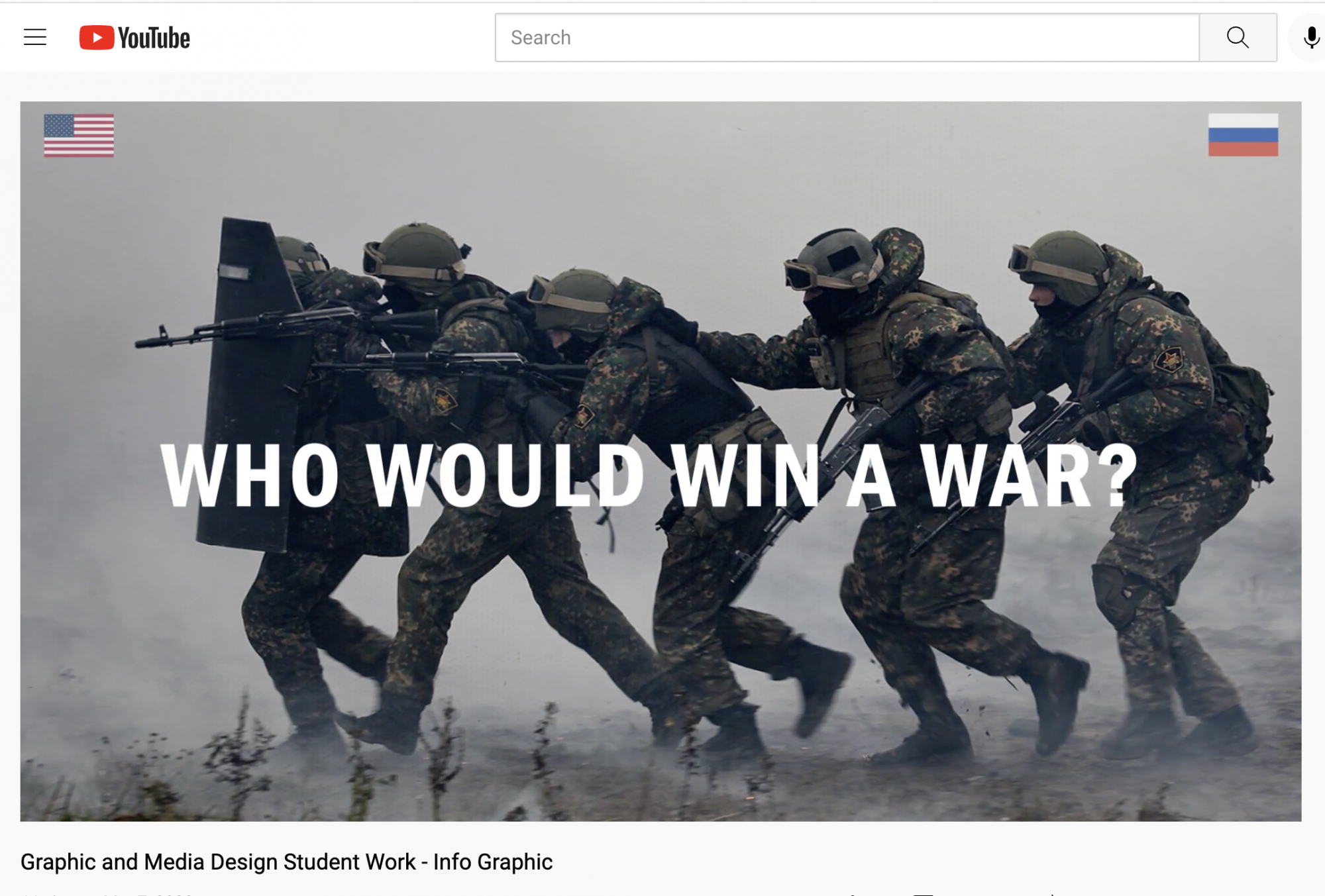Visual Arts Project Explores War

A recent visual arts project challenged Professor CeCe Wheeler's students to tell a compelling story through infographics. The assignment required critical thinking and creative problem-solving skills to translate subject matter and data into imagery.
A piece by Jastin Diemsen stood out to Wheeler. He focused on the statistics of war and its costs. While the project was in progress, the war on Ukraine broke out. Diemsen "skillfully" incorporated recent news footage about the conflict to create an engaging piece that reflects the futility of war throughout history.
"I was extremely impressed with the depth of Jastin's concept," said Wheeler, who is head of Visual Arts at Thomas Nelson. "He was able to incorporate information into his project so that the final piece is very topical and delivers a powerful message. His motion graphics skills were quite sophisticated, so the final impact is impressive."
"His work was not only timely but showcased some of the many skills our students learn," she added.
Diemsen said although the war abroad affected his work, the real inspiration was a hypothetical war between two superpowers, the U.S. and Russia. The nearly five-minute infographic compares the two world powers' armed forces examining such factors as allies, and it explores which country would win a hypothetical war based on statistical data.
When the war in Ukraine began, it forced him to more intently consider how he wanted his project to impact viewers.
"What I want audiences to take away is that it may be interesting to theorize about topics such as the one in the infographic but the lives of people at risk should be at the forefront of their minds," he stressed, saying the project was highly educational.
"I learned how to not only push my limits as an animator but how to tell a narrative through my animations. I learned especially that music, pacing, and small details can help with quality and the overall mood of the piece," Diemsen added.
The graphic arts and media design major became interested in visual arts by watching YouTube videos. He would break down the various pieces - animations, movies, and TV shows.
"This led me to (ask) questions about why an artist did their piece a certain way and how they created it," he explained.
The fascination continued to grow and in 2020, he enrolled at the College for formal education in the field.
"Learning and studying at Thomas Nelson has helped me as an artist understand the fundamentals of creating designs, videography, and animations as well as insights on how a client may react and what a client may require from an artist," said Diemsen.
He is slated to graduate this spring and plans to continue his studies in video and animation at Norfolk's Old Dominion University. He aspires to a career in visual effects and multimedia.
View Diemsen's infographic on YouTube at https://www.youtube.com/channel/UCysBZJpEJtVKxwFW3WhXsLw.
The ART 229 Multimedia Graphic Design II course is part of the Graphic and Media Design associate of applied science degree and incorporates skills in video production, design, typography, and animation.
